Introduction to the Changing Landscape of Luxury Fashion
The definition of luxury fashion has changed dramatically in recent years. Red carpet events, once only for Hollywood’s elite, are now influenced by Instagram posts and TikTok trends in deciding what’s considered luxurious and desirable.
Take Zendaya’s memorable Venice Film Festival appearance in a sculpted Balmain dress – the moment sparked millions of social media interactions within hours. This instant digital amplification has created a new paradigm where red carpet moments transcend traditional boundaries, reaching global audiences in real-time.
The luxury fashion world now exists in two realms:
- Physical showcases through prestigious events and award shows
- Digital presence across social media platforms and online communities
This change has made luxury fashion more accessible while still keeping its aspirational appeal. Brands now have to navigate both worlds – preserving their exclusive heritage while also embracing digital accessibility. The result? A constantly changing environment where celebrity influence and social media engagement work together to redefine what luxury means today.
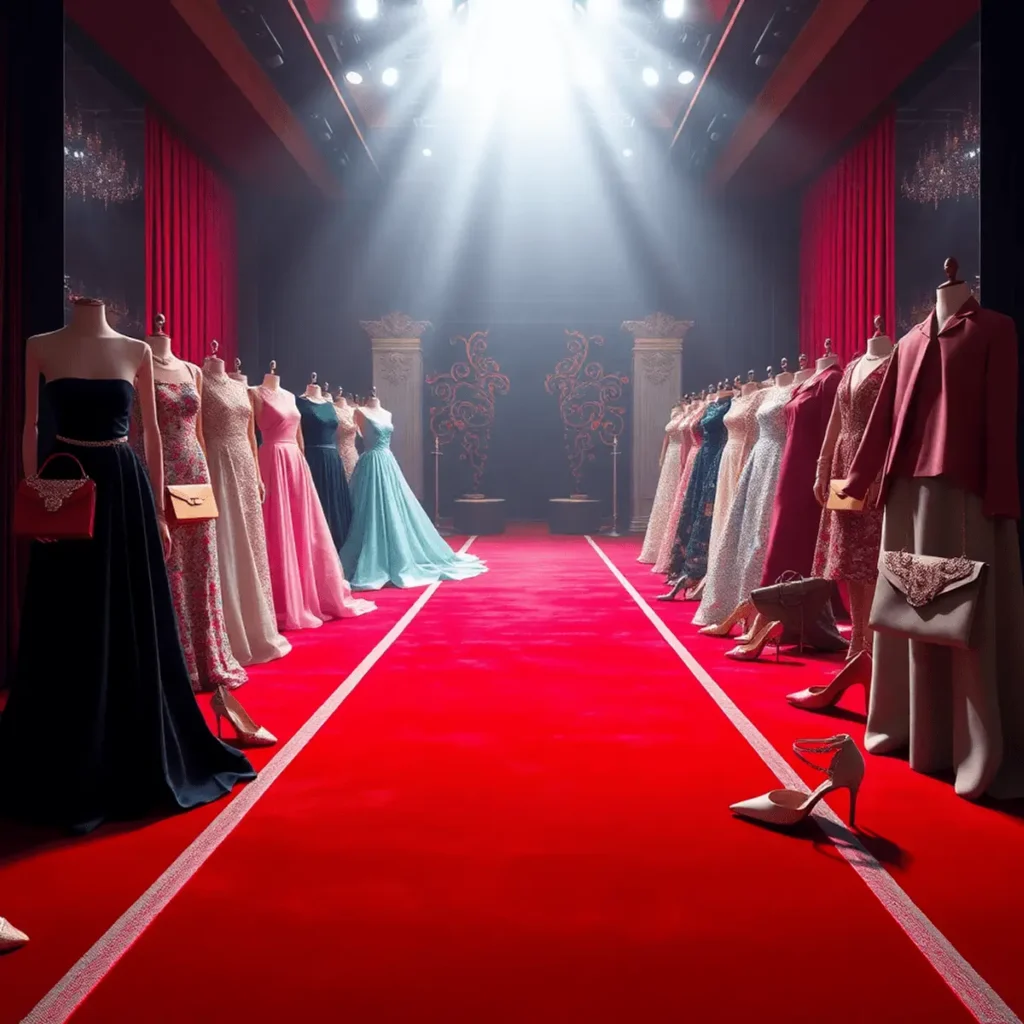
The Enduring Influence of the Red Carpet
The red carpet is the most prestigious platform in fashion, turning award shows into significant fashion events that have a lasting impact on the industry. From Audrey Hepburn’s Oscar-winning Givenchy gown in 1954 to Billy Porter’s Christian Siriano tuxedo dress in 2019, these iconic appearances become instant cultural references.
Living Museums of Fashion Evolution
Red carpet events are like living museums showcasing the evolution of fashion. One single appearance can:
- Launch trends
- Revive forgotten styles
- Establish a designer’s reputation in the luxury market
For instance, Jennifer Lopez’s unforgettable Versace jungle dress at the 2000 Grammy Awards not only made headlines but also triggered such intense online searches that it led to the creation of Google Images.
The Influence of Celebrity Choices
The choices celebrities make on the red carpet have a significant impact:
- Brand Value Impact: A well-executed red carpet moment can boost a luxury brand’s sales by up to 40% in the following quarter
- Style Democratization: Fast-fashion retailers quickly produce affordable replicas of popular red carpet looks within days
- Cultural Shifts: Red carpet fashion choices increasingly reflect social movements, such as sustainable fashion and gender-fluid styling
Beyond Entertainment: The Power of the Red Carpet
The influence of the red carpet goes beyond just movies and music. A-list celebrities have evolved from being mere models for designers to becoming genuine style authorities. Their fashion decisions spark global discussions, affect buying choices, and steer the course of luxury fashion brands.
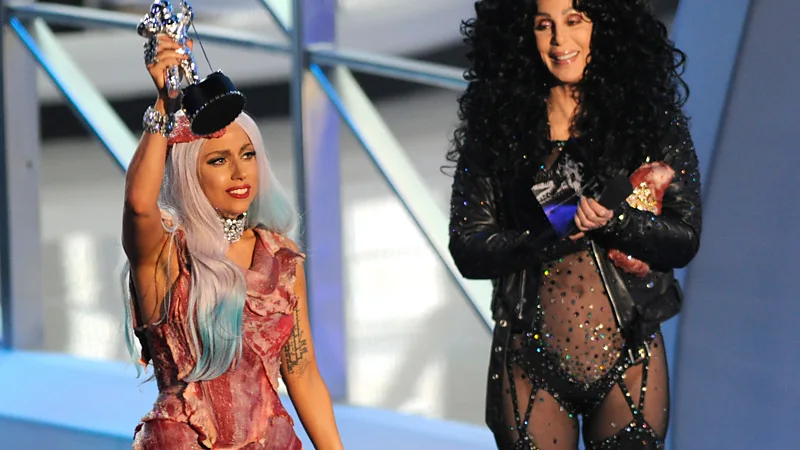
Lady Gaga’s controversial meat dress at the 2010 VMAs and Rihanna’s striking yellow Guo Pei cape at the 2015 Met Gala are prime examples of how these moments go beyond fashion and become cultural phenomena. These instances are not just about personal style but also highlight how celebrities impact pop culture and how companies in the fashion industry have utilized the growth of pop culture with elements of their marketing techniques. Additionally, events like the Met Gala have a rich history filled with controversy and celebrity influence, making them a significant part of our cultural narrative (learn more about it here).
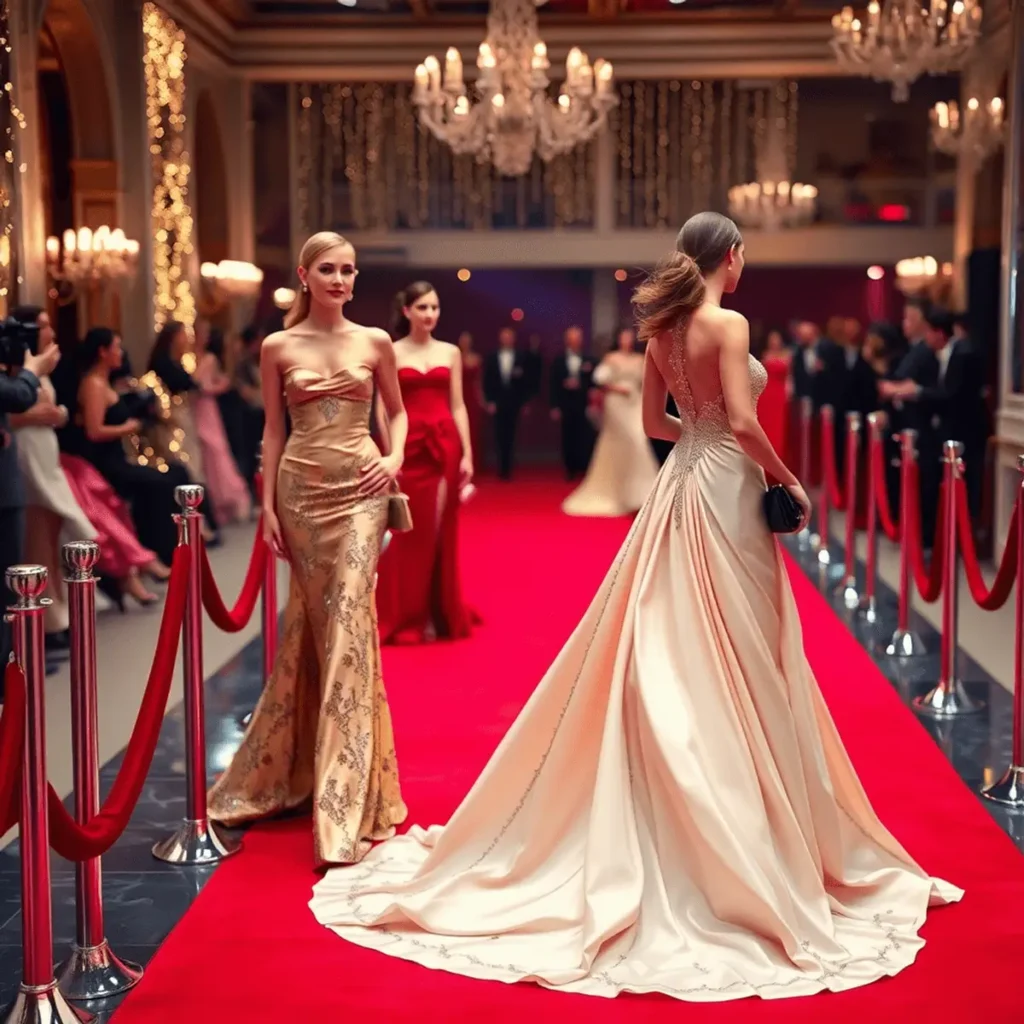
Celebrity Stylists: The Unsung Heroes Behind the Glamour
Behind every stunning red carpet moment stands a visionary stylist, orchestrating the perfect blend of artistry and strategy. These fashion architects work tirelessly to create memorable looks that can make or break a celebrity’s public image.
The Process of Celebrity Styling
Celebrity stylists like Law Roach, known for his work with Zendaya, spend months curating distinctive looks that align with their clients’ personal brands. The process involves:
- Maintaining relationships with design houses
- Tracking upcoming collections
- Negotiating exclusive deals
- Managing fittings and alterations
- Coordinating accessories and jewelry
Notable Stylist-Designer Collaborations
The stylist-designer collaboration has produced remarkable fashion moments. Take Jason Bolden’s partnership with Michael Kors for Cynthia Erivo’s 2021 SAG Awards appearance – a custom-made gown that required 100 hours of handwork and generated significant social media engagement.
These partnerships extend beyond single events. Karla Welch and Justin Bieber’s long-term collaboration with Saint Laurent has redefined men’s red carpet fashion, pushing boundaries with gender-fluid pieces and innovative silhouettes.
The Ripple Effect on the Fashion Industry
The impact of these collaborations ripples through the fashion industry. When Kate Young dressed Margot Robbie in vintage Chanel for the 2023 Golden Globes, the look sparked a surge in demand for archive pieces, influencing luxury resale markets and contemporary design directions.
From Runways to Timelines: How Social Media Took Over Luxury Fashion
Social media platforms have completely changed how luxury fashion communicates. Instead of relying solely on traditional methods like print ads and runway shows, brands now have the opportunity to connect directly with their audience through platforms like Instagram and TikTok.
The Rise of Instagram: A Digital Runway
Instagram’s visual-first approach has created a digital runway for luxury brands. Here, they can showcase their latest collections through immersive storytelling and behind-the-scenes content. Brands such as Louis Vuitton and Gucci are making the most of Instagram’s features – including Stories and Reels – to craft engaging narratives that resonate with their tech-savvy audience.
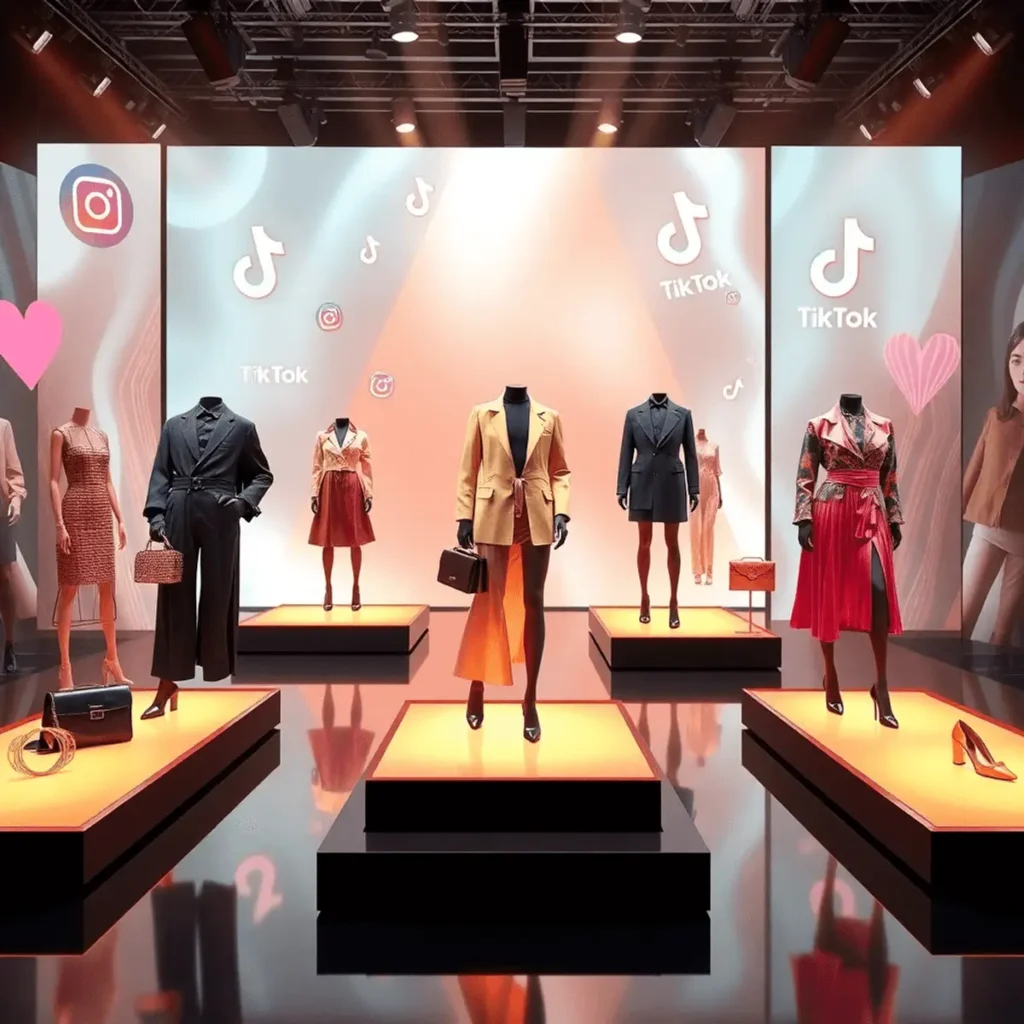
TikTok’s Disruption: User-Generated Content Takes Center Stage
TikTok has emerged as a game-changing platform, democratizing luxury fashion through user-generated content and viral trends. The platform’s algorithm-driven discovery system allows luxury brands to reach Gen-Z consumers through:
- Creative hashtag challenges
- Behind-the-scenes glimpses of fashion shows
- Designer interviews and product launches
- Style tutorials and fashion hacks
Influencer Marketing: A Key Strategy for Connecting with Younger Audiences
Influencer marketing has become a cornerstone strategy for luxury brands targeting younger demographics. A single post from a well-aligned influencer can generate significant engagement and sales. Brands like Dior and Prada have embraced this shift, collaborating with digital creators who bring fresh perspectives to their heritage.
The metrics speak volumes – luxury fashion houses see up to 70% higher engagement rates through influencer partnerships compared to traditional marketing channels. These collaborations create authentic connections with audiences who value relatability and transparency in their luxury consumption journey.
The Impact of Social Media on Fashion Trends
Social media’s real-time nature has accelerated the fashion cycle, transforming red carpet moments into instant trending topics. You’ll see A-list celebrities’ outfits dissected, recreated, and reimagined across platforms within hours of their appearance.
Viral Sensations: The New Face of Luxury Fashion Marketing
Luxury fashion brands have embraced viral marketing strategies, transforming traditional advertising into shareable digital moments. The rise of meme culture has created unexpected opportunities for high-end brands to connect with younger audiences through humor and relatability.
Success Stories in Viral Luxury Marketing:
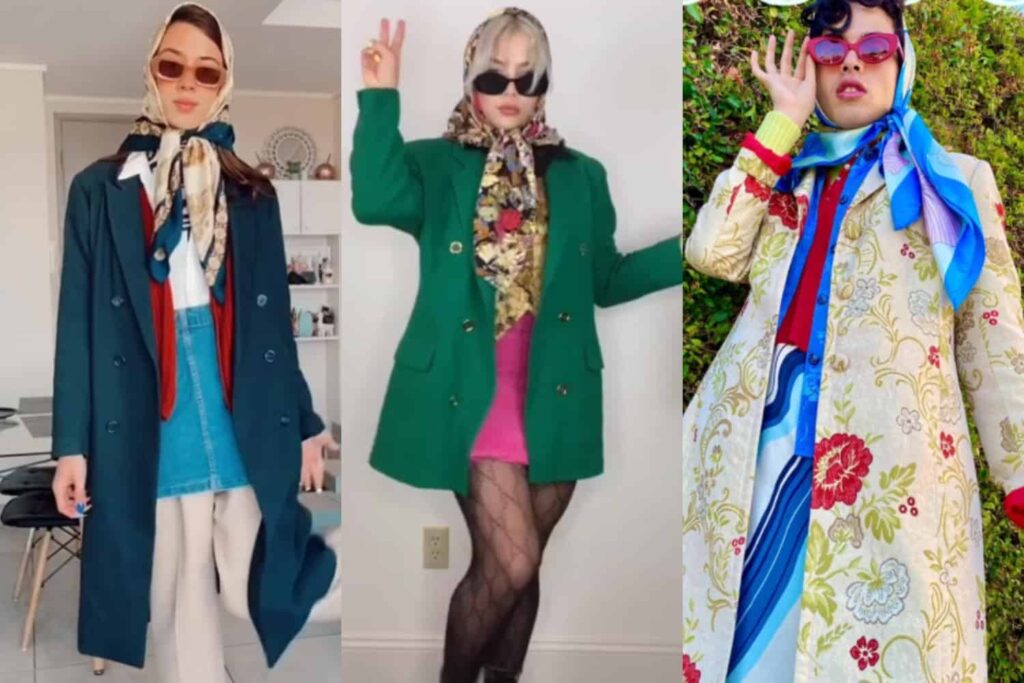
- Gucci’s #GucciModelChallenge on TikTok generated 2.5M+ user-created videos
- Balenciaga’s controversial “destroyed sneakers” campaign sparked global discussions
- Louis Vuitton’s collaboration with Supreme created unprecedented street-style buzz
The viral approach carries significant risks. Burberry faced backlash for their 2019 Chinese New Year campaign, deemed culturally insensitive by social media users. Yet successful viral moments can dramatically boost brand visibility – Jacquemus’ tiny Le Chiquito bag became an internet sensation, selling out despite its impractical size.
Key Elements of Viral Luxury Content:
- Unexpected brand collaborations
- Meme-worthy product designs
- Behind-the-scenes glimpses
- User-generated content challenges
Luxury brands now dedicate significant resources to monitoring and creating viral-worthy content. Social listening teams track emerging trends, while creative departments craft shareable moments that maintain brand prestige. This strategic shift reflects a deeper understanding that viral success requires authenticity, timing, and cultural awareness.
The intersection of meme culture and luxury fashion has created a new marketing language. Brands like Gucci and Balenciaga intentionally design products and campaigns with viral potential, understanding that social media buzz translates into real-world sales and brand recognition. This shift towards embracing cringe content as part of their strategy further illustrates the evolving landscape of brand marketing in the digital age.
Navigating Celebrity Culture: Building Trust Through Endorsements
Celebrity endorsements tap into deep psychological triggers that shape consumer behavior in luxury markets. Research shows that when consumers see their favorite celebrities wearing specific brands, their brains activate reward centers associated with trust and aspiration.
The psychology behind this phenomenon reveals three key factors:
- Parasocial relationships – Fans develop one-sided emotional connections with celebrities, viewing them as trusted friends
- Social proof – Celebrities validate luxury purchases by demonstrating their value and desirability
- Identity alignment – Consumers seek to mirror the perceived lifestyle and status of admired personalities
Successful luxury brand partnerships carefully evaluate celebrity-brand fit. Take Zendaya’s collaboration with Valentino – her authentic style expression and advocacy for diversity perfectly align with the brand’s modern vision. This strategic match strengthens consumer trust through genuine representation.
Brand credibility hinges on selecting ambassadors who embody core values. Louis Vuitton’s partnership with tennis star Naomi Osaka demonstrates this principle – her mental health advocacy and athletic excellence reflect the brand’s commitment to both performance and social responsibility.
The rise of micro-celebrities and niche influencers has created new opportunities for authentic luxury endorsements. These partnerships often resonate more deeply with specific consumer segments, as followers perceive stronger authenticity and relatability in their recommendations.
The Future Landscape: Sustainability Meets Digital Innovation
The luxury fashion industry is at a crucial point where sustainability and digital innovation come together. Eco-friendly designs are now taking center stage at red carpet events, with celebrities such as Emma Watson and Cate Blanchett advocating for sustainable fashion choices at prestigious ceremonies.
Key Sustainability Trends Reshaping Luxury Fashion:
- Vintage and archive pieces making prominent red carpet appearances
- Upcycled materials transformed into haute couture statements
- Digital fashion shows reducing the industry’s carbon footprint
- Blockchain technology verifying sustainable sourcing
The rise of virtual influencers like Lil Miquela demonstrates how digital avatars can promote sustainable luxury without physical production waste. These AI-powered personalities reach millions of followers while maintaining perfect brand alignment.
Gen Z’s demand for transparency has pushed luxury brands to adopt innovative solutions:
- Digital wardrobes and NFT fashion collections
- Augmented reality try-ons for red carpet looks
- Real-time sustainability metrics shared on social platforms
Luxury houses like Gucci and Stella McCartney lead this transformation, proving that prestige and environmental responsibility can coexist. As metaverse fashion weeks gain traction and sustainable materials advance, the future of luxury fashion promises to be both digitally immersive and environmentally conscious.
The next generation of fashion influencers will likely emerge from this intersection of technology and sustainability, redefining what luxury means for a climate-aware digital age.
FAQs (Frequently Asked Questions)
How has social media changed the landscape of luxury fashion?
Social media platforms, particularly Instagram and TikTok, have transformed how luxury brands communicate with their audience. They provide a space for brands to showcase their offerings and engage directly with consumers, allowing for a more democratized approach to luxury fashion.
What role do celebrity stylists play in luxury fashion?
Celebrity stylists are crucial in curating memorable red carpet looks that capture attention and generate buzz. Their collaborative relationships with designers often lead to iconic fashion moments that shape public perception of luxury.
What is the significance of the red carpet in luxury fashion?
The red carpet serves as a powerful medium for establishing trends and shaping public perception of luxury fashion. Celebrities on the red carpet often dictate what is considered fashionable, making it a significant event in the industry.
How do viral phenomena impact luxury fashion marketing?
Viral moments, including memes and internet challenges, have become integral to luxury brands’ marketing strategies. They can enhance brand visibility but also come with risks, requiring careful management to leverage virality effectively.
What psychological mechanisms are involved in celebrity endorsements for luxury brands?
Consumers often associate luxury brands with famous personalities due to psychological mechanisms that relate to trustworthiness and aspirational lifestyles. Aligning brand values with those of endorsed celebrities is essential for establishing authenticity and credibility.
What future trends are expected to influence luxury fashion?
Emerging trends such as sustainability are expected to shape the future trajectory of both red carpet events and social media in relation to luxury branding. Brands will need to adapt continuously as new forms of influence evolve in the digital landscape.

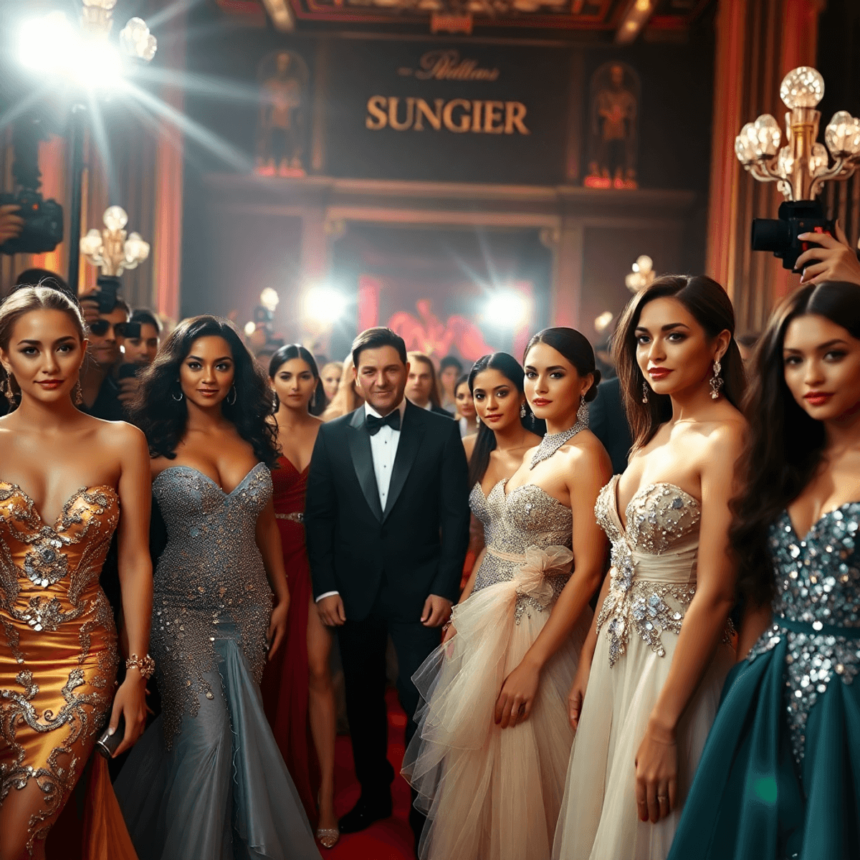
Leave a Reply